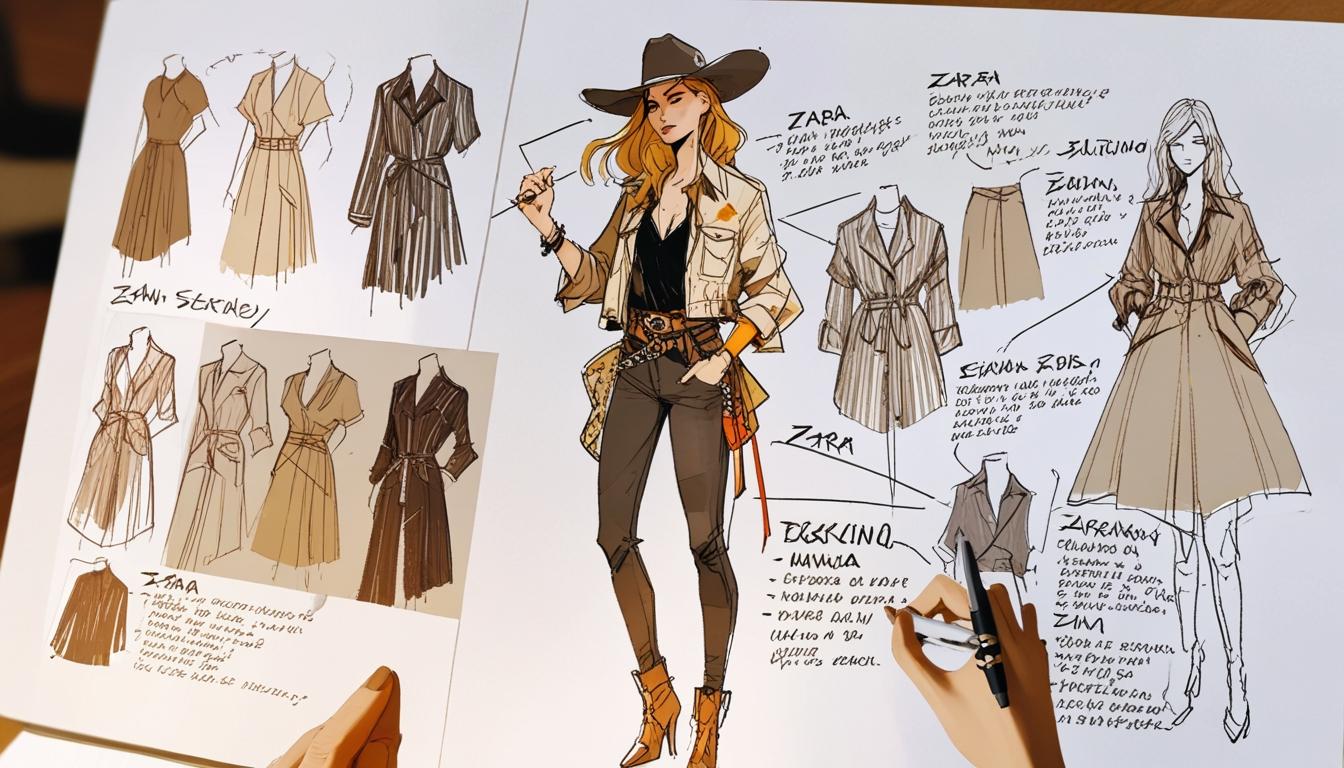Inside the Secretive World of Zara
Zara, a titan in high-street fashion and part of the Inditex conglomerate, has redefined how consumers experience style. As the brand approaches its milestone of 50 years since the opening of its inaugural store, a rare glimpse into its operations has revealed both the creativity and complexity that underpin its success. At the heart of this operation, designer Mehdi Sousanne, who has been with Zara for over a decade, describes the upcoming season's line as a blend of romantic, cowboy, and rock 'n' roll aesthetics. Such insights underline Zara’s enduring appeal and its ability to stay ahead in a fiercely competitive landscape, now increasingly challenged by the likes of Shein and Temu, ultra-low-cost online retailers that rely on rapid shipping straight from China.
Operating from a vast campus in Galicia, Spain, Zara’s business model thrives on agility. Inditex, the world’s largest fashion retailer, utilises around 1,800 suppliers globally, with production heavily concentrated in regions close to its headquarters to minimise lead times. In fact, over half of Zara's garments are manufactured in neighbouring countries such as Spain, Portugal, and Turkey. This strategy allows Zara to alter its offerings swiftly, responding to evolving fashion trends at a pace that astonishes traditional retailers who typically release two main collections per year. As CEO Oscar Garcia Maceiras notes, the emphasis on diversification—producing in nearly 50 different markets—ensures that Zara can pivot effectively even when navigating challenges, such as fluctuating US tariffs.
The practical side of Zara's artistry is fascinating. With a team of 350 designers hailing from about 40 countries, the creative process is as collaborative as it is spontaneous. Inspired by everything from street style to cinema, designers like Sousanne create mood boards that guide the initial stages of garment production. Furthermore, efficient logistics play a crucial role in Zara’s success. Real-time data analytics ensure that decision-makers respond to customer preferences rapidly, allowing for adjustments in the fashion range mid-season. This data-driven approach enables Zara to maintain a careful balance between supply and demand while avoiding excessive markdowns, only opting for reductions during biannual sales.
As Inditex adapts to global challenges, including recent shipping disruptions from the Red Sea that have prompted the brand to increase its use of air freight from India, environmental concerns have arisen. Air transport, while effective for timely delivery, significantly escalates carbon emissions, raising questions about Inditex's commitment to sustainability. The company has pledged to halve its 'Scope 3' emissions by 2030, but with increasing reliance on air freight, achieving this target may prove daunting. Inditex has responded by stressing its investments in alternative fuels and logistics optimisation, yet investors continue to call for transparency regarding air freight's environmental impact.
Additionally, Zara is making strides in enhancing its logistics infrastructure. The company recently announced the acquisition of its largest logistics centre in Malpica, Zaragoza, set to span 286,000 square metres and expected to create 1,500 jobs. This state-of-the-art facility reinforces Inditex's global logistics network and aligns with the brand’s objective of innovative order management and supply chain efficiency. The development, anticipated to be operational by mid-2025, is a testament to Zara’s enduring ambition amid a rapidly evolving retail landscape.
On the sustainability front, Zara faces scrutiny not only for its logistics practices but also for its sourcing strategies. A recent investigation highlighted the brand’s links to deforestation in Brazil's Cerrado through its cotton supply chain. Despite boasting Better Cotton certification, the evidence suggests involvement in violations of environmental laws, prompting calls for stricter European regulations on commodities linked to deforestation. As the global fashion industry grapples with increasing demands for sustainability, it remains to be seen how brands like Zara will navigate these challenges while maintaining their market dominance.
Looking towards the future, Zara has begun innovative collaborations, notably partnering with British designer Samuel Ross to launch the SR_A line. This partnership marks Zara’s first long-term collaboration with an independent designer, fusing streetwear and sustainable practices at accessible price points. Ross’s commitment to genuine, environmentally-conscious design resonates well with contemporary consumer expectations, signalling that Zara is not merely a purveyor of fast fashion, but also an evolving player in the sustainability dialogue that defines modern retail.
In summary, Zara exemplifies a remarkable case of adaptability and strategic growth in a fast-paced fashion industry. As it continues to evolve amid growing environmental scrutiny and emerging competitors, its journey will serve as an essential study for anyone interested in the future of retail and sustainable practices.
Reference Map:
- Paragraph 1 – [1]
- Paragraph 2 – [1], [2]
- Paragraph 3 – [1], [3]
- Paragraph 4 – [1], [4]
- Paragraph 5 – [1], [5]
- Paragraph 6 – [1], [6]
Source: Noah Wire Services
